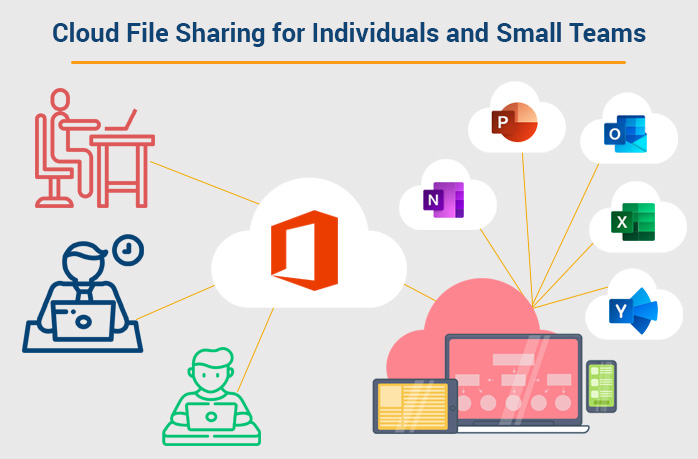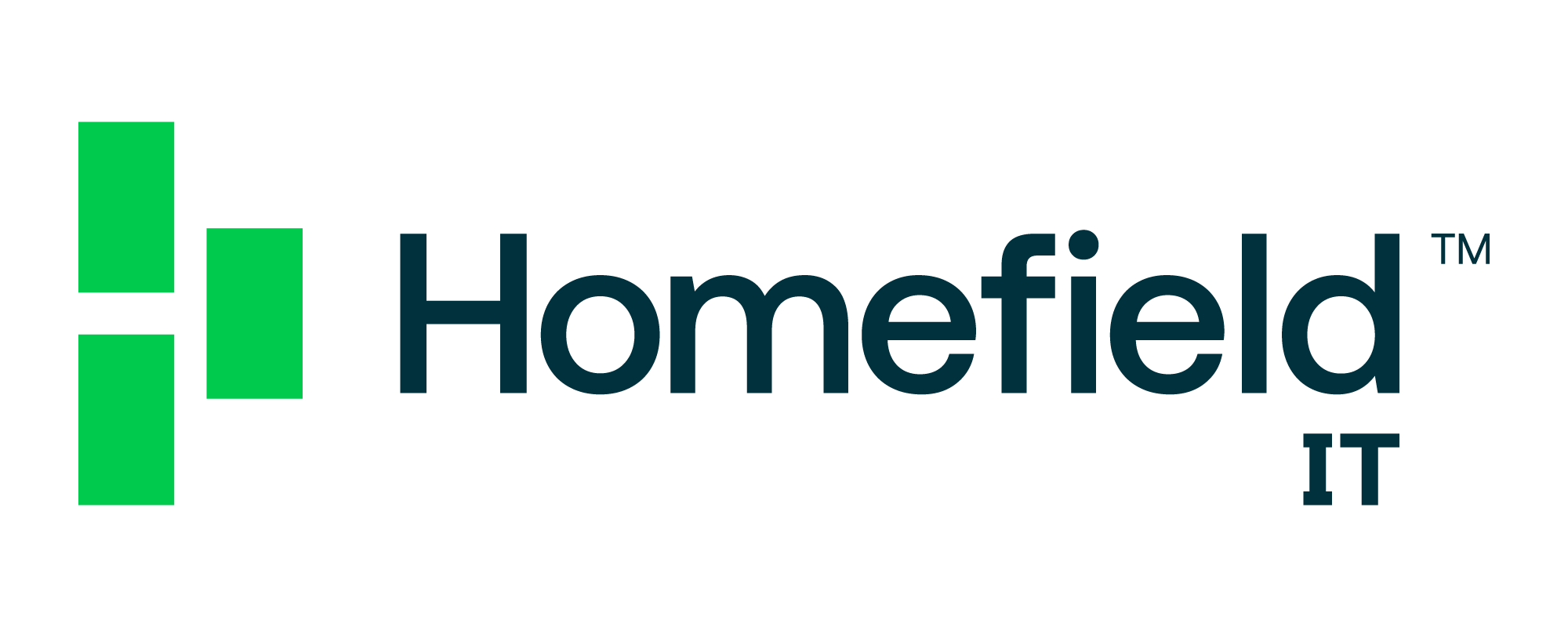Tech Support & Managed IT ServicesCloud ServicesIT Consulting & StrategyFinanceConstructionEducationHealthcareLegalReal Estate
While there are now over 155 million individuals using the latest version of Microsoft Office 365, there are many others that are unsure about the true benefits that the software provides, or even exactly how cloud computing can help their company arrive at a new level of productivity.
In the first blog post in this two-part series, we explored how the cloud has supercharged Microsoft’s well-known office applications – Word, Excel, and PowerPoint. But those are just one part of what makes Office 365 so revolutionary.
To truly grasp the complete advantages of Office 365, let’s dig a bit deeper into the concept of cloud computing and see how it can fundamentally improve the way your company collaborates and works.

Microsoft SharePoint and OneDrive Are Foundations for Cloud Success
Placing your data and files in the cloud allows them to move between systems and people with unprecedented ease. It isn’t just about one person sharing a file as they would do with an email attachment, it’s about orchestrating your technology to provide up-to-date data to every person and application in your organization, enabling robust real-time collaboration.
Sharing data in the cloud is so important that Microsoft has developed two separate applications for the task, Microsoft SharePoint and Microsoft OneDrive. Though these applications may appear similar on one level, and share a common foundation, they are built with two different purposes in mind.
OneDrive – Cloud File Sharing for Individuals and Small Teams
OneDrive was designed to meet the cloud storage needs of small business and teams. While a user can grant share permissions to others as needed, by default access is maintained by just the primary user. Although rather limited in its ability to provide comprehensive cloud productivity to your whole organization, OneDrive is an excellent place for small businesses to begin their journey to the cloud.
Here are some of the features that users often tell us they like about OneDrive:
- Sync data between devices and the cloud with ease
- Store data on Microsoft servers where it’s safe from disaster or lost device
- Increased collaboration between small teams and individuals
- Encourage workplace mobility with flexible document sharing and editing
SharePoint – Enterprise Cloud Functionality for SMBs
For companies that want to make a stronger commitment to cloud computing, storing company data in SharePoint may be a better move. Unlike OneDrive, which was built with the individual user in mind, SharePoint is a robust platform that enables organizations to put entire libraries of information in the cloud. Because SharePoint data isn’t “owned” by any single users, you can configure access permissions with a high degree of precision, allowing data to flow in and out of analytics, CRM, ERP, and line-of-business applications freely.
But SharePoint is more than just powerful; it’s flexible. The SharePoint platform can be configured to help maximize the impact of your cloud migration or solve chronic IT problems. Here are some of the most popular issues that SharePoint helps you address.
Solve Document Management Issues – Many companies have difficulty creating an adequate document management system (DMS). Common problems involved in document management include the centralization of important information, authenticating duplicate data, struggling with inadequate metadata, and others.
Since first being launched in the early 2000s, SharePoint has evolved to offer powerful document management capabilities, including the ability to create repositories of quality documentation for auditing purposes, digital signatures, automatic document capture and evaluation, and many others. While some of these advanced features will require a SharePoint specialist to implement across your business fully, the SharePoint software itself can provide these functions and more in a single package.
Improve Employee Engagement
Did you know that 90% of users would stop using an application because of poor design? The software must provide a clean, intuitive user interface and experience, or risk harming employee efficiency and morale.
The new “modern” SharePoint interfaces allow users to create centralized pages for your organization or each team within your organization. What took days or weeks of work in the past can now be down in just a few minutes or hours using SharePoint’s new WYSIWYG editor. SharePoint sites are responsive too, meaning that users will have no trouble accessing them from mobile devices.
Consistent branding and easy content management for your company intranet centralizes important information and presents it to your staff in a way that’s fun and exciting. It not only streamlines mass communication and energizes your team; it also provides concrete business benefits. Have you ever considered creating a specialized knowledge library to help new employees get up to speed? SharePoint makes that — and other similar projects — easy to accomplish.
Microsoft Teams Helps You Stay Organized and Communicate in Real-Time
The Office 365 suite is consistently updated with new applications and features, many of which provide capabilities found in competing applications like Slack and Asana, with the added benefit of deep integration with the Microsoft ecosystem.
Microsoft has designed Teams as its answer to Slack and other next-generation, chat-based collaboration software. Teams allows your staff to flexibly organize communication, maximize transparency and more, all through a single intuitive interface.
Here are some of the key features that make Microsoft Teams a competitive alternative to other leading collaboration suites.
Quickly Share and Collaborate in Real-Time
Not only does Teams offer an intuitive instant messaging interface, with GIFs, emoticons, reactions, and all the other popular features, it also provides powerful business functionality like in-line translation, automatic transcription, and build-in co-authoring tools. By centralizing group collaboration in a single interface, Teams reduces email back-and-forth and streamlines collaboration related workflows.
Unify Disparate Productivity Applications
Businesses have been forced to use different applications for each aspect of collaboration, like Outlook for Email, Join.me, and Zoom for teleconferencing, OneDrive for file sharing, etc. Teams unifies those functionalities, allowing your staff to quickly find consensus meeting time, organize people into separate channels, flexibly join a group or private meetings, and share important data from within Teams or itself, or from their Microsoft Outlook inbox.
Pro-tip:
Did you know that Microsoft Planner is a tool for keeping a workgroup on the same page without using full-featured project management software? Resembling a very robust task list, Planner allows users to assign jobs to team members, organize them into lists and “buckets,” then visually track the progress of each task to ensure projects are completed on time.

We Can Maximize the Benefit of Your Office 365 Subscription
Office 365 has been designed to provide user-friendly productivity, but installing, configuring, and maintaining it takes a certified Microsoft partner, like Manhattan Tech Support. We’ve helped hundreds of businesses in NYC get the most out of Office 365 and other Microsoft products. If you’d like to speak with our experts about migrating to Office 365 or have questions to ask before you begin, we’re always available to help.
Call us any time at 212-299-7673 or email us at
We look forward to speaking with you!
SEE MORE
Kaytuso – the cybersecurity & regulatory compliance division of ManhattanTechSupport.com LLC.
Exceed Digital – the custom software development and business intelligence solutions division of ManhattanTechSupport.com LLC
 July 23, 2019
July 23, 2019 Manhattan Tech Support
Manhattan Tech Support




